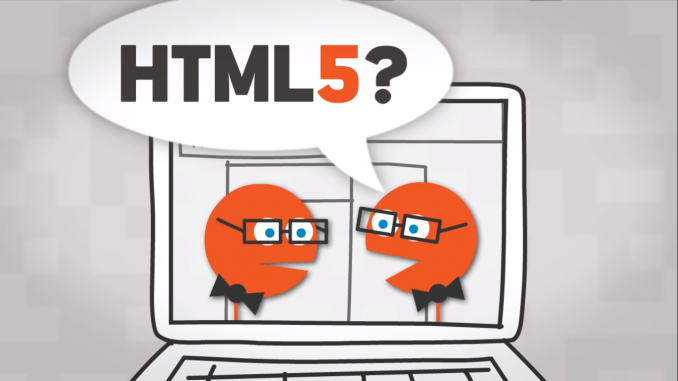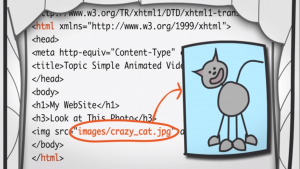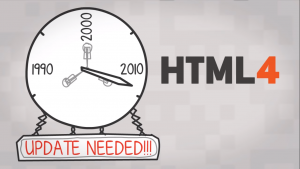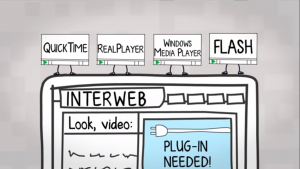
Hypertext Markup Language or HTML is the language that web pages are written in.
So just as a computer program executes code written in C++ or some other programming language, a web browser will take HTML and translate it, so you end up with a nice shiny web page on your monitor or tablet. The last major revision of HTML version 4 came out in 1997, but since then, annual internet traffic has increased by many thousands of times, so we’ve been long overdue for an update to the language that is the backbone of nearly everything you do online.
When HTML 4 made its debut, most web pages had much simpler layouts and consisted mainly of static images, GIFs and text. Interactive elements required plugins such as Shockwave or Java, and high quality streaming video or audio was unheard of. As such, HTML 4 didn’t have or need native support for a lot of the things that we now take for granted. And then for a long time nothing changed.
Well after sites like YouTube went mainstream and watching TV or listening to music online became the norm rather than the domain of a few computer enthusiasts in their basement somewhere most web browsers still relied on plugins and other resource-hogging elements to properly handle this new content, and this was never more evident than when the Apple iPhone showed up, dominated the smartphone market. Then thanks to its browser’s complete lack of support for Flash it couldn’t even access many of the fancy-looking interactive websites of the time.
The issue was that Flash is a closed standard owned by Adobe and required extra processing power. On a mobile device like an iPhone resource-intensive standards like Flash can seriously cut into battery life. Apple openly criticized Flash, and other developers agreed that they needed an open source standard that they could build modern websites around. Enter HTML5. The first draft was published back in 2008 with the final version having been released only a few months ago. In October, 2014 HTML5 was devised with two things in mind. One, the prevalence of streaming and interactive elements on the modern web and two, the fact that so many people rely on mobile devices these days instead of the more traditional desktops and laptops.
Possibly the biggest change is dedicated video and audio tags. These tags allow HTML5 supporting browsers to play common video formats natively. This makes things easier on both web developers who don’t have to rely on third party programming interfaces nearly as much to build web pages as well as on users who will be able to stream music and video with less of a performance hit and less battery drain. HTML5 offers more than just streaming enhancements though. Browsers that support HTML5 will have better support for vector graphics, which are commonly used for images other than photographs.
Vector graphics can be resized without losing any quality, making their use increasingly popular in modern websites that are designed to be displayed correctly on everything from your phone all the way to your TV. HTML5 will also offer better support for things like drag-and-drop, an online document or even video editing, which is increasingly important as we continue to do more and more things through a web browser like photo sharing an online file storage. As you’re traveling around the web and trying to find ways to earn cheap karma on Reddit or whatever else it is you’re doing, pay attention to subtle changes in your browser and see if you can notice whether you can do more with less hardware. Of course, you might just not do that and spend more time actually enjoying your stupid GIFs or whatever else it is on the web and noticing less and less on the technical side, which is of course what HTML5 was actually designed for you to do.





